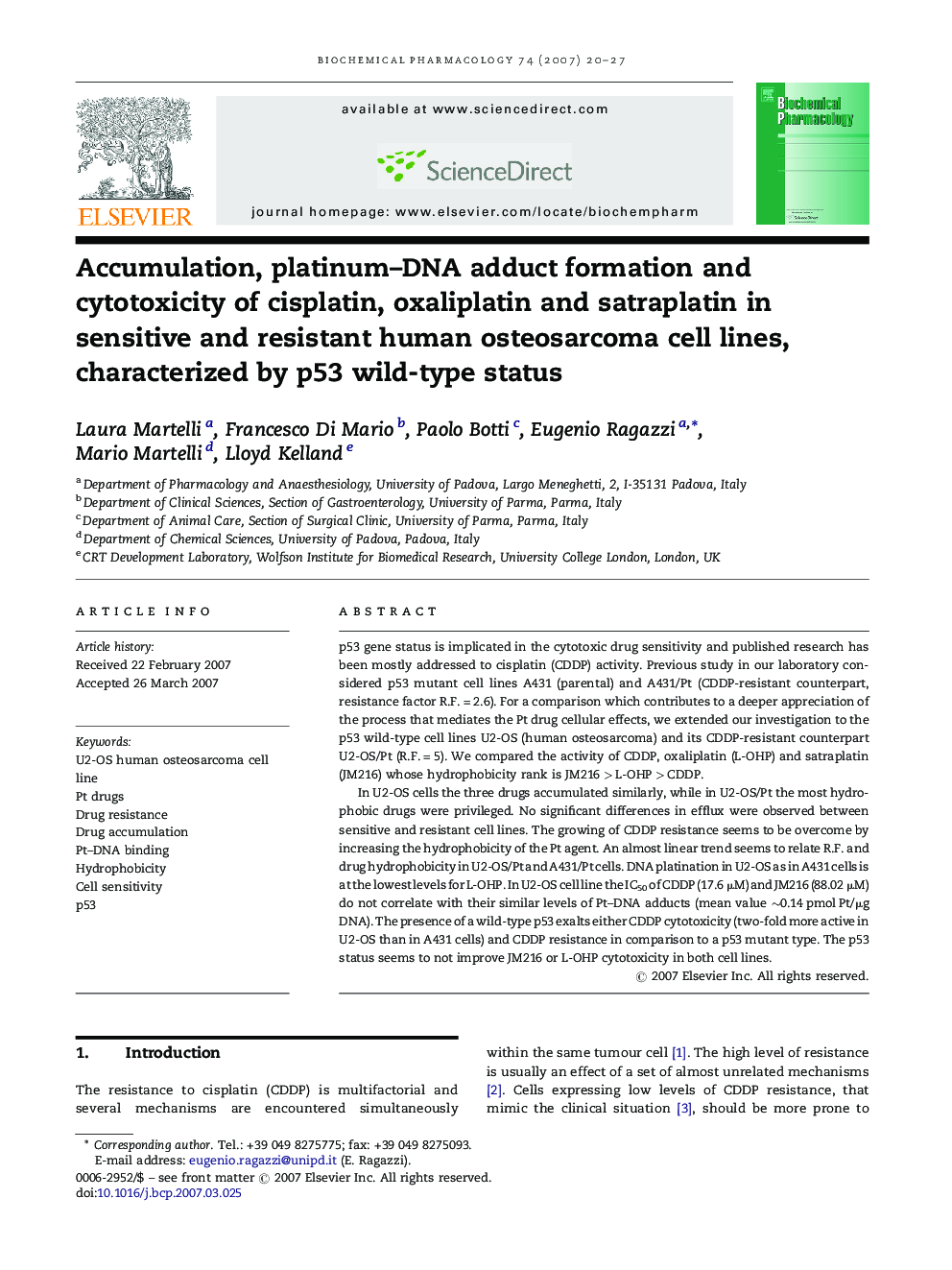| Article ID | Journal | Published Year | Pages | File Type |
|---|---|---|---|---|
| 2515536 | Biochemical Pharmacology | 2007 | 8 Pages |
p53 gene status is implicated in the cytotoxic drug sensitivity and published research has been mostly addressed to cisplatin (CDDP) activity. Previous study in our laboratory considered p53 mutant cell lines A431 (parental) and A431/Pt (CDDP-resistant counterpart, resistance factor R.F. = 2.6). For a comparison which contributes to a deeper appreciation of the process that mediates the Pt drug cellular effects, we extended our investigation to the p53 wild-type cell lines U2-OS (human osteosarcoma) and its CDDP-resistant counterpart U2-OS/Pt (R.F. = 5). We compared the activity of CDDP, oxaliplatin (L-OHP) and satraplatin (JM216) whose hydrophobicity rank is JM216 > L-OHP > CDDP.In U2-OS cells the three drugs accumulated similarly, while in U2-OS/Pt the most hydrophobic drugs were privileged. No significant differences in efflux were observed between sensitive and resistant cell lines. The growing of CDDP resistance seems to be overcome by increasing the hydrophobicity of the Pt agent. An almost linear trend seems to relate R.F. and drug hydrophobicity in U2-OS/Pt and A431/Pt cells. DNA platination in U2-OS as in A431 cells is at the lowest levels for L-OHP. In U2-OS cell line the IC50 of CDDP (17.6 μM) and JM216 (88.02 μM) do not correlate with their similar levels of Pt–DNA adducts (mean value ∼0.14 pmol Pt/μg DNA). The presence of a wild-type p53 exalts either CDDP cytotoxicity (two-fold more active in U2-OS than in A431 cells) and CDDP resistance in comparison to a p53 mutant type. The p53 status seems to not improve JM216 or L-OHP cytotoxicity in both cell lines.
